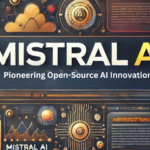Here is a detailed blog post based on the provided information about OpenAI:
In the rapidly evolving landscape of artificial intelligence, one organization stands out for its ambitious mission and groundbreaking innovations: OpenAI. Founded in 2015, this San Francisco-based AI research company has quickly become a leader in developing advanced AI systems that are pushing the boundaries of what’s possible with machine learning and natural language processing.
Let’s take a deep dive into the history, key developments, and impact of OpenAI as it works to shape the future of AI technology.
The Birth of OpenAI
OpenAI was established in December 2015 by a group of tech luminaries and entrepreneurs, including:
- Sam Altman (CEO)
- Greg Brockman (President)
- Ilya Sutskever
- Wojciech Zaremba
- John Schulman
The organization was initially set up as a non-profit with $1 billion in funding pledged from high-profile donors and investors. Its stated mission was to ensure that artificial general intelligence (AGI) – AI systems that match or exceed human intelligence across a wide range of tasks – would benefit humanity as a whole.
Key Milestones and Innovations
Since its founding, OpenAI has been at the forefront of AI research and development. Some of its most notable achievements include:
GPT Language Models
OpenAI’s work on large language models has been revolutionary. The GPT (Generative Pre-trained Transformer) series of models have set new benchmarks for natural language processing:
- GPT-2 (2019): Demonstrated impressive text generation capabilities
- GPT-3 (2020): A 175 billion parameter model that could engage in human-like dialogue and perform a variety of language tasks
- GPT-4 (2023): The latest iteration with multimodal capabilities, able to process both text and images
DALL-E
In 2021, OpenAI unveiled DALL-E, an AI system that can generate unique images from text descriptions. This was followed by DALL-E 2 in 2022 and DALL-E 3 in 2023, each improving on the quality and capabilities of AI image generation.
ChatGPT
Launched in November 2022, ChatGPT took the world by storm. This conversational AI, built on the GPT-3.5 model, demonstrated an unprecedented ability to engage in human-like dialogue, answer questions, and assist with a wide variety of tasks.
Other Notable Projects
- OpenAI Five: An AI system that learned to play the complex game Dota 2 at a professional level
- Whisper: An open-source speech recognition system released in 2022
- Codex: An AI model for translating natural language to code, powering GitHub Copilot
The Shift to a “Capped-Profit” Model
In 2019, OpenAI made a significant change to its structure, transitioning from a non-profit to a “capped-profit” company. This move was designed to attract more capital and talent while still maintaining its mission-driven focus. Under this model, investors’ returns are limited to 100 times their investment.
Partnership with Microsoft
OpenAI’s relationship with Microsoft has been crucial to its growth and capabilities:
- In 2019, Microsoft invested $1 billion in OpenAI
- In 2023, Microsoft announced a multi-year, multi-billion dollar investment, rumored to be around $10 billion
- OpenAI’s models are now powering various Microsoft products, including the Bing chatbot and GitHub Copilot
Challenges and Controversies
Despite its successes, OpenAI has faced its share of challenges:
Leadership Shakeup
In November 2023, OpenAI experienced a brief but intense leadership crisis:
- CEO Sam Altman was suddenly fired by the board
- This led to threats of mass employee resignations
- After five days of negotiations, Altman was reinstated as CEO
- The board was restructured, with new members added
Ethical Concerns
As AI capabilities have advanced, concerns have been raised about:
- Potential misuse of AI technology
- Bias and fairness in AI systems
- The impact of AI on jobs and society
OpenAI has worked to address these issues through research into AI safety and ethics.
Copyright and Data Usage
OpenAI has faced legal challenges over the use of copyrighted material in training its AI models. Several lawsuits have been filed by authors and publishers alleging copyright infringement.
Looking to the Future
As OpenAI continues to push the boundaries of AI technology, several key areas of focus emerge:
- Advancing AGI: Continuing research towards artificial general intelligence
- AI Safety: Ensuring AI systems are safe and aligned with human values
- Democratizing AI: Making advanced AI capabilities accessible to a wider audience
- Ethical AI Development: Addressing concerns around bias, privacy, and societal impact
Conclusion
OpenAI has established itself as a pivotal player in the AI revolution. From its humble beginnings as a non-profit research lab to its current status as a world-leading AI company, OpenAI has consistently pushed the boundaries of what’s possible with artificial intelligence.
As we look to the future, the innovations coming out of OpenAI will likely continue to shape the trajectory of AI technology and its impact on society. While challenges and ethical considerations remain, the potential for AI to solve complex problems and enhance human capabilities is immense.
The story of OpenAI is far from over. As the field of AI continues to evolve at a breakneck pace, all eyes will be on this San Francisco-based company to see what groundbreaking developments emerge next.
What are your thoughts on OpenAI and the future of artificial intelligence? Let us know in the comments below!


